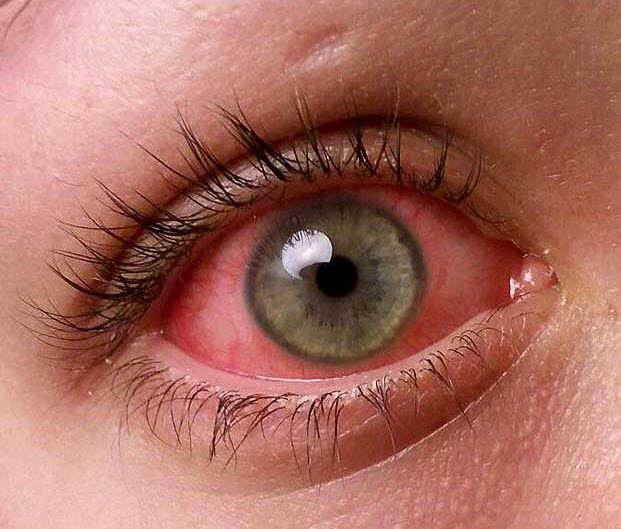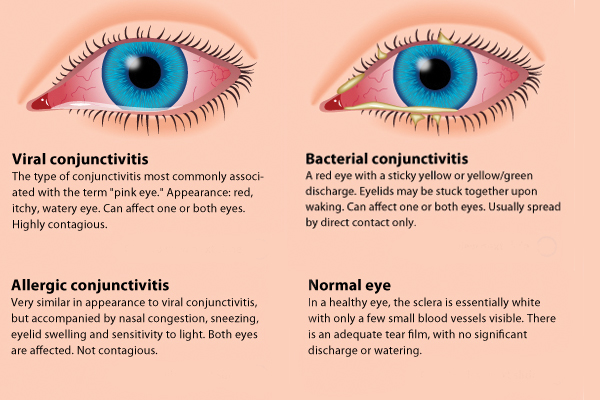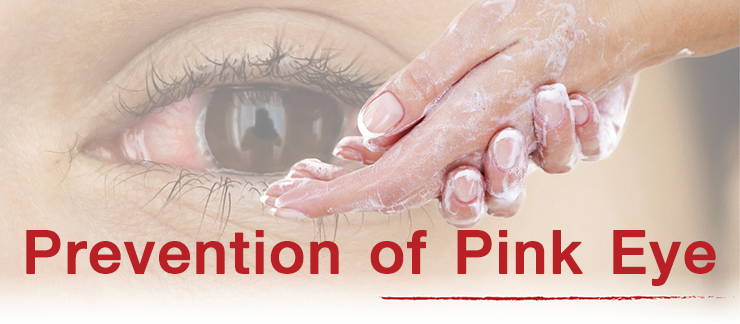Conjunctivitis, also known as pink eye, is one of the most common eye problems in the world. It’s not painful, but can be bothersome nonetheless. In pink eye, the think, clear part covering the white of your eyes gets inflamed, along with the inside of the eyelids, called conjunctiva. The red, bloodshot eyes most associated with the condition is caused by the dilation of blood vessels in the conjunctiva. Hence the appearance, and the name. So how is conjunctivitis caused, what are the symptoms and how can one prevent it? Here’s all you need to know!

First of all, we need to understand the type of conjunctivitis. Yes, even though it’s a single problem, it can be caused by various factors, each requiring a specific approach. There are three types of conjunctivitis, they are as follows:
- Allergic conjunctivitis: Sometimes considered a seasonal conjunctivitis, allergic conjunctivitis is mainly caused by an allergic reaction to dust, pollen and animal dander. Not everyone might have allergic reactions to these materials, so it’s not the most common.
- Bacterial conjunctivitis: As evident from the name, bacterial conjunctivitis is caused by harmful bacteria. Unlike other types however, if left unattended, it can cause a lot more damage and lead to more problems.
- Viral conjunctivitis: Viral conjunctivitis is caused by a virus, which could also be something simple like the common cold. As you can imagine, it’s the most contagious of the three types, and can spread very easily, especially among children. Even though it is contagious, viral conjunctivitis usually clears up in a week or so even without treatment.
Symptoms and Treatment
Other than the common red or pink eyes, each type of conjunctivitis has its own set of symptoms and treatments. Here’s how you can understand what type of conjunctivitis it is and how to deal with it:

- Allergic conjunctivitis: The main symptoms are red, watery and itchy eyes, which are usually sensitive to light. As we mentioned, since it’s caused by an allergy, it could be accompanied by a runny nose or stuffiness. The main discerning sign are inflamed eyelids, which is sometimes wrongly associated with conjunctivitis in general. Allergic conjunctivitis can be treated by anti-allergic medicines or anti-histamines.
- Bacterial conjunctivitis: Bacterial conjunctivitis is the easiest to discern, because along with the red and itchy eyes, there’s a yellow or greenish discharge from the corner of the eyes. This discharge is sticky, and can sometimes stick your eyelids together. Furthermore, it’s contagious, and any contact with the discharge could spread the condition. Bacterial conjunctivitis can be treated by anti-biotic eyedrops or ointments.
- Viral conjunctivitis: Finally, there’s viral conjunctivitis. Its symptoms are red, itchy and watery eyes, which are sensitive to light. Viral conjunctivitis is pretty contagious, so hygiene is paramount. Viral conjunctivitis doesn’t need any particular treatment, but you can just use something to reduce the symptoms, like ice wrapped in a clean handkerchief or something similar.
Prevention of Pink Eye
As they always say, prevention is better than a cure, isn’t it? Conjunctivitis is fairly easy to stay away from, all you need to do is follow a few steps to keep yourself and your belongings clean. Here’s what you need to do:

- Keep your hands clean, wash them with a proper disinfecting handwash soap frequently. Also keep a bottle of hand sanitizer with you handy.
- Do not share hand towels, handkerchiefs or napkins with others.
- Cover your mouth while coughing or sneezing.
- Do not rub or touch your eyes, especially if you haven’t washed your hands since a long time.
- Do not share contact lenses with anyone else.
- While swimming, use swimming goggles to keep viruses and bacteria from the pool out of your eyes.
- Avoid wearing eye makeup.
- Change your bed linen and pillow covers at least once in a week.
So that’s it, all you need to do to keep conjunctivitis away is follow some basic hygiene rules, as we mentioned above. Although we mentioned how conjunctivitis isn’t all that dangerous, like many other smaller health problems, leaving it unattended for too long can lead to worse problems. Prolonged conjunctivitis should be checked with your eye doctor immediately, as it can lead to conditions like conjunctival trauma, mucus fishing syndrome, Stevens-Johnson syndrome and many more. To end it, all we can say is, stay clean, stay safe!
Image Credits: lekar.bg, angieslist.com, samitivejhospital.com
